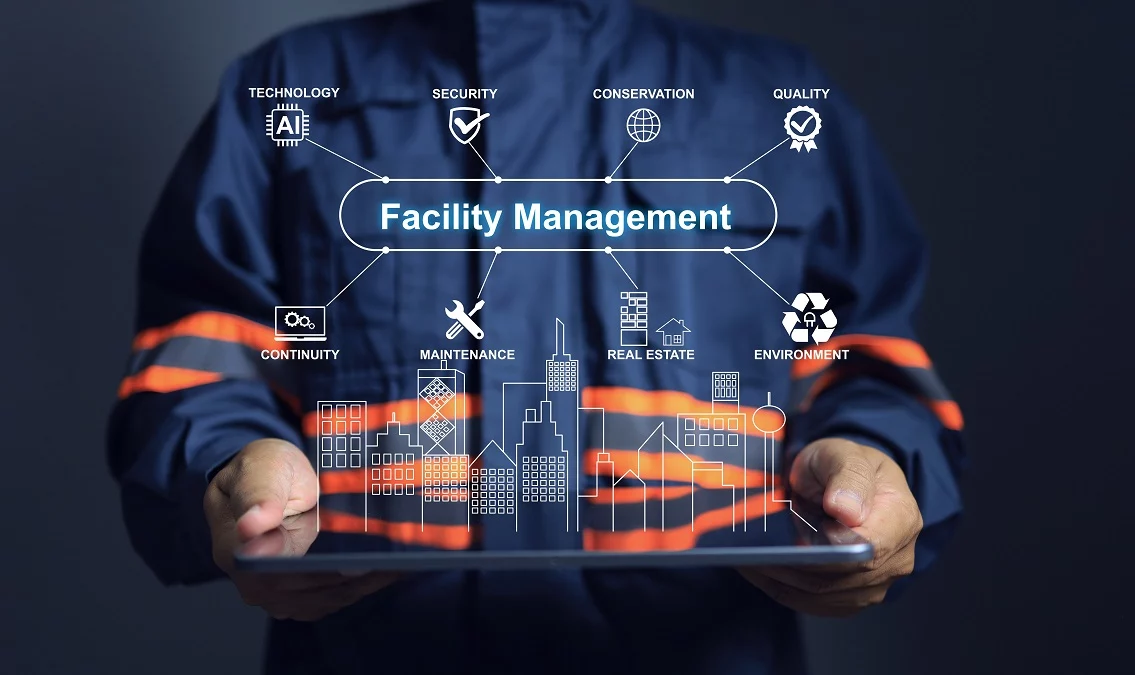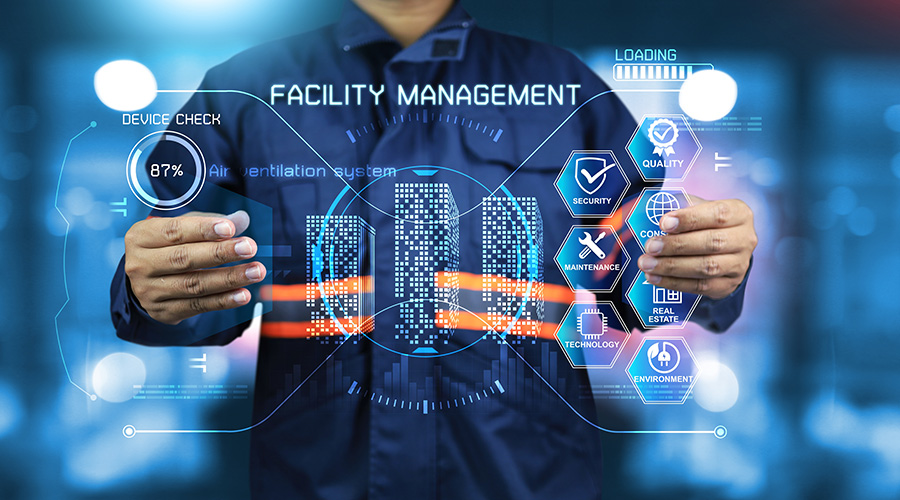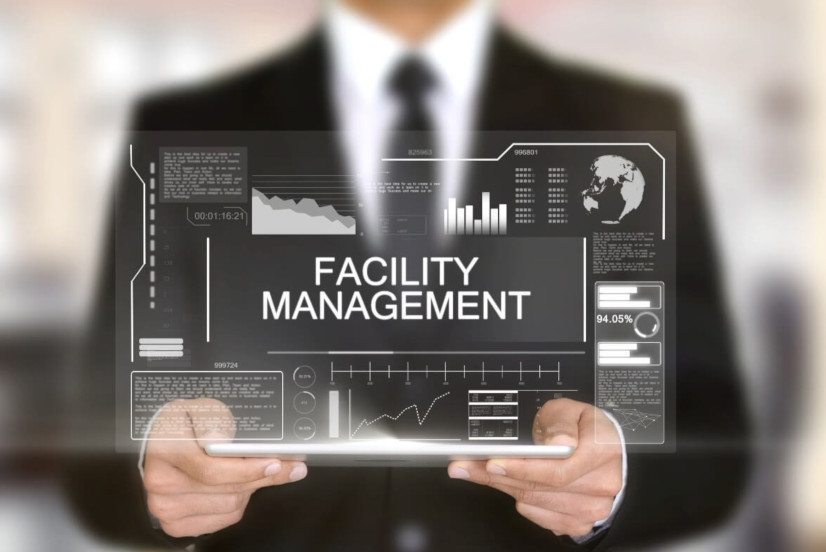Secret Patterns Shaping the Future of Center Monitoring in 2024
As we expect 2024, the landscape of facility monitoring is positioned for significant improvement, driven by several key trends. The assimilation of clever structure technologies and a shift in the direction of data-driven decision-making pledge to boost operational effectiveness while focusing on sustainability in method. The introduction of crossbreed work designs is improving office atmospheres, necessitating innovative design options that cater to advancing employee requirements. Amidst these adjustments, the emphasis on occupant health remains to get grip, emphasizing the importance of a healthy and balanced work environment. Just how these fads will manifest in practice stays a vital inquiry for sector professionals.
Smart Building Technologies

Smart building innovations include a vast selection of systems, consisting of smart illumination, a/c controls, and safety systems. By integrating these systems, facility supervisors can check and readjust specifications in real-time, causing considerable decreases in power waste and functional prices. Wise sensors can discover occupancy levels and adjust lights and temperature level as necessary, making sure that power is only used when necessary.
Moreover, these innovations facilitate boosted information collection, enabling organizations to track usage patterns and recognize possibilities for additional improvements. The implementation of smart building technologies not only adds to sustainability goals but also creates much healthier workplace that can increase staff member performance and fulfillment.
As we move into 2024, the fostering of wise structure innovations will likely speed up, mirroring a more comprehensive shift in the direction of even more intelligent, receptive, and lasting facility monitoring practices.
Data-Driven Choice Making
Progressively, organizations are leveraging data-driven choice making to enhance center management techniques. By using data analytics, center managers can obtain actionable understandings that considerably boost operational performance and resource appropriation. The combination of innovative innovations, such as IoT sensors and real-time surveillance systems, enables the collection of substantial amounts of information on building efficiency, tenancy prices, and energy intake.
This wealth of details allows facility supervisors to identify patterns, forecast maintenance demands, and proactively address issues prior to they rise. For circumstances, anticipating analytics can forecast equipment failings, lowering downtime and repair work prices. Additionally, data visualization devices promote better interaction amongst stakeholders, ensuring that notified choices are made collaboratively.
Furthermore, data-driven strategies enhance calculated planning by allowing facility managers to examine the performance of current practices and make informed choices concerning investments in innovation or facilities. As organizations progressively prioritize operational excellence, data-driven decision making is poised to become a keystone of effective center monitoring methods in 2024 and past. Eventually, the capability to take advantage of data efficiently will equip organizations to create extra reliable, effective, and durable facilities.
Sustainability and Green Practices
The emphasis on data-driven choice making normally aligns with the growing concentrate on sustainability and environment-friendly techniques within facility management. As companies significantly focus on environmental responsibility, center supervisors are leveraging analytics to enhance resource usage, reduce waste, and minimize carbon impacts. This critical technique makes it possible for the combination of energy-efficient systems, such as LED illumination, smart HVAC controls, and renewable resource sources right into center operations.
Furthermore, the application of lasting practices expands past power consumption. Center supervisors are embracing environment-friendly materials and promoting reusing efforts to produce a round economy within their centers. This not just enhances the environmental profile of the company but likewise cultivates a culture of sustainability amongst workers.
Compliance with environmental regulations is one more crucial facet driving the adoption of eco-friendly practices. By using information analytics, facility managers can check compliance metrics and determine locations for improvement, making sure adherence to local and worldwide sustainability requirements.
Crossbreed Work Models
A substantial change towards hybrid job versions is reshaping the landscape of center monitoring in 2024. This paradigm integrates in-office and remote work, requiring a reevaluation of space application, resource allowance, and staff member interaction approaches. Organizations are increasingly identifying the significance of versatile workspaces that deal with varied requirements and preferences.
Facility supervisors should adapt by carrying out flexible workplace styles that sustain collaborative initiatives while directory providing locations for focused work. This consists of the combination of technology to promote seamless interaction and partnership amongst remote and in-office staff members. Smart building solutions, furnished with analytics and sensing units, permit real-time monitoring of area usage, making it possible for organizations to maximize their environments effectively.
Moreover, crossbreed job versions highlight the requirement for efficient center monitoring that prioritizes worker experience. This includes not just technology and area style but additionally the growth of plans that promote a well balanced work-life dynamic. As companies navigate this shift, the function of facility monitoring comes to be pivotal in producing an active office that cultivates productivity and drives organizational success. Fundamentally, the hybrid work design is reinventing center monitoring, urging an aggressive strategy to fulfill the evolving demands of the labor force.
Improved Passenger Wellness
As companies welcome hybrid job designs, an increased emphasis on passenger health is ending up being important to center management techniques. Facility Management. This change acknowledges that a healthy and balanced and pleased labor force straight affects performance and retention rates. Center supervisors are currently prioritizing settings that advertise physical and psychological wellness, integrating components such as all-natural lighting, biophilic style, and easily accessible wellness sources

Technology plays an essential function in this development. Smart building systems can keep track of have a peek at this site environmental elements and adjust settings in real-time, ensuring optimal convenience degrees - Facility Management. In addition, responses systems, such as occupancy sensors and employee surveys, permit center supervisors to continuously fine-tune wellness initiatives based on owner demands.

Conclusion
In 2024, the future of center monitoring will certainly be considerably influenced by the integration of smart building innovations and data-driven decision-making, promoting boosted functional performance. These fads jointly underscore the developing landscape of facility administration in action to contemporary difficulties and possibilities.
Center supervisors are taking on Going Here environment-friendly products and promoting reusing campaigns to produce a round economic climate within their centers.A considerable change in the direction of hybrid job versions is improving the landscape of center administration in 2024.Additionally, hybrid job versions stress the demand for effective facility monitoring that prioritizes employee experience.As organizations accept hybrid work models, a heightened focus on resident wellness is coming to be important to center monitoring methods.In 2024, the future of facility management will be significantly affected by the assimilation of clever structure innovations and data-driven decision-making, fostering boosted functional efficiency.